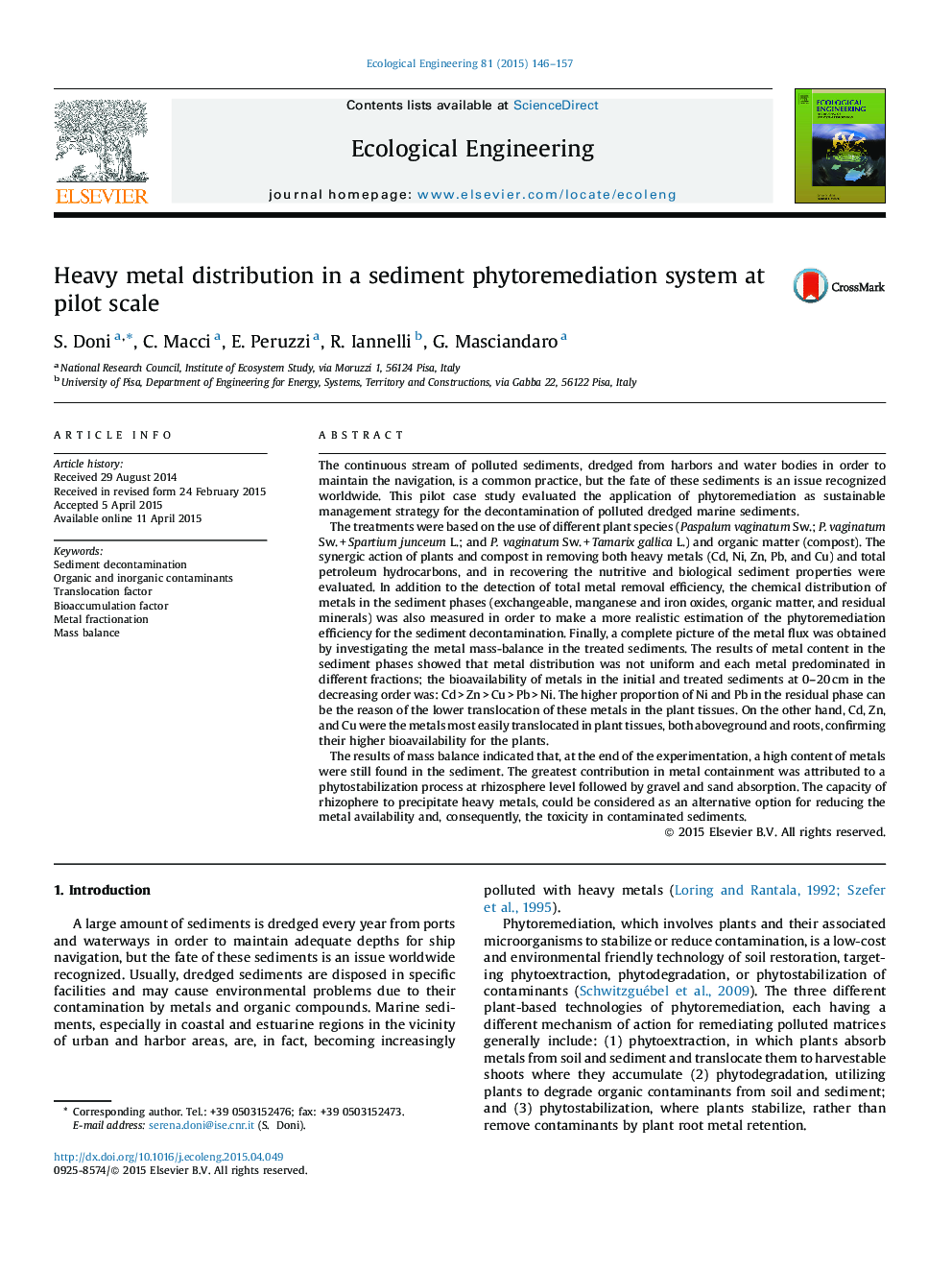| کد مقاله | کد نشریه | سال انتشار | مقاله انگلیسی | نسخه تمام متن |
|---|---|---|---|---|
| 4389068 | 1618018 | 2015 | 12 صفحه PDF | دانلود رایگان |
• Phytostabilization was suitable to recover dredged marine sediments.
• An improvement of the nutritive and biological sediment properties was obtained.
• A significant reduction in organic contaminants was measured in planted sediments.
• The great contribution in metal containment was attributed to rhizosphere stabilization.
The continuous stream of polluted sediments, dredged from harbors and water bodies in order to maintain the navigation, is a common practice, but the fate of these sediments is an issue recognized worldwide. This pilot case study evaluated the application of phytoremediation as sustainable management strategy for the decontamination of polluted dredged marine sediments.The treatments were based on the use of different plant species (Paspalum vaginatum Sw.; P. vaginatum Sw. + Spartium junceum L.; and P. vaginatum Sw. + Tamarix gallica L.) and organic matter (compost). The synergic action of plants and compost in removing both heavy metals (Cd, Ni, Zn, Pb, and Cu) and total petroleum hydrocarbons, and in recovering the nutritive and biological sediment properties were evaluated. In addition to the detection of total metal removal efficiency, the chemical distribution of metals in the sediment phases (exchangeable, manganese and iron oxides, organic matter, and residual minerals) was also measured in order to make a more realistic estimation of the phytoremediation efficiency for the sediment decontamination. Finally, a complete picture of the metal flux was obtained by investigating the metal mass-balance in the treated sediments. The results of metal content in the sediment phases showed that metal distribution was not uniform and each metal predominated in different fractions; the bioavailability of metals in the initial and treated sediments at 0–20 cm in the decreasing order was: Cd > Zn > Cu > Pb > Ni. The higher proportion of Ni and Pb in the residual phase can be the reason of the lower translocation of these metals in the plant tissues. On the other hand, Cd, Zn, and Cu were the metals most easily translocated in plant tissues, both aboveground and roots, confirming their higher bioavailability for the plants.The results of mass balance indicated that, at the end of the experimentation, a high content of metals were still found in the sediment. The greatest contribution in metal containment was attributed to a phytostabilization process at rhizosphere level followed by gravel and sand absorption. The capacity of rhizophere to precipitate heavy metals, could be considered as an alternative option for reducing the metal availability and, consequently, the toxicity in contaminated sediments.
Figure optionsDownload as PowerPoint slide
Journal: Ecological Engineering - Volume 81, August 2015, Pages 146–157
